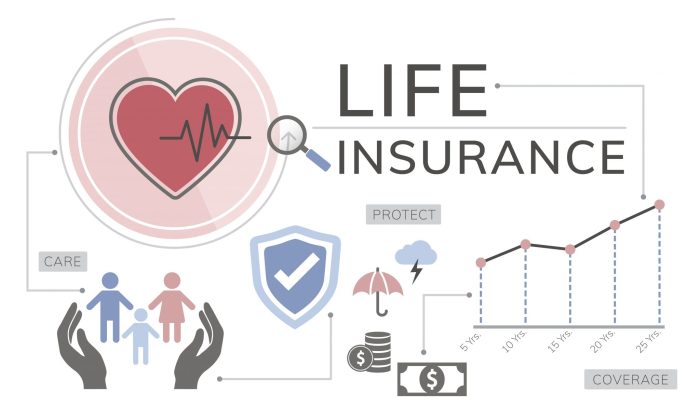Securing your family’s financial future through life insurance is a crucial step, but understanding the intricacies of premiums is often a daunting task. This guide unravels the complexities surrounding life insurance premiums, offering a clear and concise explanation of the factors that influence their cost. From age and health to policy type and coverage amount, we’ll explore the key elements that determine how much you pay for this essential protection.
We will delve into the various policy features and how they impact premiums, comparing quotes from different insurers to highlight potential cost variations. Furthermore, we’ll provide actionable strategies to help you potentially lower your premiums and make informed decisions about securing affordable and adequate life insurance coverage.
Factors Influencing Life Insurance Premiums

Understanding the factors that determine your life insurance premiums is crucial for making informed decisions about your coverage. Several key elements contribute to the final cost, and it’s important to understand their individual impact to choose a policy that best suits your needs and budget.
Age
Age is a significant factor in life insurance premium calculations. As you get older, your risk of death increases, leading to higher premiums. Insurers use actuarial tables, based on extensive statistical data, to assess the likelihood of a claim within a specific age group. Younger individuals typically receive lower premiums because they are statistically less likely to pass away in the near future. The difference in premiums between a 25-year-old and a 55-year-old applying for the same coverage can be substantial.
Health Status
Your health status plays a crucial role in determining your life insurance premium. Individuals with pre-existing conditions, such as heart disease, diabetes, or cancer, generally face higher premiums due to the increased risk of early mortality. Insurers will review your medical history, potentially requiring medical examinations or additional information, to assess your overall health risk. Maintaining a healthy lifestyle can significantly impact your premium rates.
Lifestyle Choices
Lifestyle choices, such as smoking, excessive alcohol consumption, and dangerous hobbies, significantly influence premium costs. Smokers, for instance, are often charged higher premiums because smoking significantly increases the risk of various health problems, leading to a higher probability of a claim. Similarly, individuals engaging in high-risk activities, like skydiving or mountain climbing, may face increased premiums. These activities increase the likelihood of accidents or injuries, impacting the insurer’s risk assessment.
Policy Type
Different types of life insurance policies carry varying premium structures. Term life insurance offers coverage for a specific period, typically at a lower premium than permanent policies. Whole life insurance, on the other hand, provides lifelong coverage and builds cash value, resulting in higher premiums. Universal life insurance offers flexibility in premium payments and death benefits but typically falls between term and whole life in terms of cost.
Coverage Amount
The amount of coverage you choose directly impacts your premium. A larger death benefit requires a higher premium because the insurer assumes a greater financial obligation. The more coverage you need, the more expensive your policy will be. This is a simple relationship: the greater the financial protection, the greater the cost.
| Factor | Impact on Premium | Explanation | Example |
|---|---|---|---|
| Age | Higher premiums with increasing age | Increased risk of mortality with age | A 30-year-old pays significantly less than a 60-year-old for the same coverage. |
| Health Status | Higher premiums with pre-existing conditions | Increased risk of early death due to health issues | Someone with diabetes may pay more than someone with perfect health. |
| Lifestyle Choices | Higher premiums for risky behaviors | Increased risk of accidents or health problems | Smokers typically pay more than non-smokers. |
| Policy Type | Term life < whole life < universal life (generally) | Different coverage durations and features | Term life insurance premiums are lower than whole life insurance premiums. |
| Coverage Amount | Higher premiums with increased coverage | Greater financial obligation for the insurer | $500,000 coverage costs more than $250,000 coverage. |
Understanding Policy Features and Their Premium Impact
The cost of your life insurance policy isn’t solely determined by your age and health. Many policy features significantly influence the premium you pay. Understanding these features and their impact is crucial for making an informed decision about the type and level of coverage that best suits your needs and budget. This section explores how various policy components affect your premiums.
Riders and Their Premium Impact
Adding riders to your life insurance policy expands its coverage, but typically increases the premium. Riders are optional benefits that provide additional protection beyond the basic death benefit. For example, an accidental death benefit rider pays an extra sum if the insured dies due to an accident. A waiver of premium rider continues coverage if the insured becomes disabled and can no longer afford the premiums. The cost of these riders depends on factors like the amount of additional coverage and the insured’s age and health. Generally, the more extensive the rider’s coverage, the higher the premium increase.
Policy Features Affecting Premiums
Several policy features can influence premiums, either increasing or decreasing them. Features that typically increase premiums include longer policy terms (e.g., whole life insurance compared to term life insurance), higher death benefits, and the inclusion of various riders as discussed above. Conversely, features that might lower premiums can include a higher deductible (in policies with a built-in health component), choosing a longer payment period (paying premiums over a longer term might result in lower annual payments, although the total amount paid will be higher), and opting for a lower death benefit. The specific impact varies by insurer and policy type.
Cash Value Accumulation and Premiums in Permanent Life Insurance
Permanent life insurance policies, such as whole life or universal life, build cash value over time. This cash value is funded by a portion of your premiums. While the premiums for permanent policies are generally higher than those for term life insurance, the cash value component offers a savings element and the potential for tax-advantaged growth. The higher premiums reflect both the death benefit and the cash value accumulation feature. The rate of cash value growth can vary depending on the policy’s investment performance (for variable universal life policies).
Key Features Influencing Life Insurance Policy Cost
Several key features collectively determine the cost of a life insurance policy. These include the insured’s age and health, the type of policy (term vs. permanent), the length of the policy term, the death benefit amount, the presence of riders, and the payment method (single premium vs. regular premiums). Insurers use sophisticated actuarial models to assess risk and set premiums accordingly. A healthier, younger individual will typically qualify for lower premiums than an older individual with pre-existing health conditions.
Premium Comparison: Policies With and Without Riders
| Policy Feature | Premium (Annual) Without Rider | Premium (Annual) With Rider | Rider Type |
|---|---|---|---|
| Basic Term Life ($500,000, 20-year term, 35-year-old male, non-smoker) | $1,000 | $1,150 | Accidental Death Benefit ($500,000) |
| Basic Term Life ($500,000, 20-year term, 35-year-old male, non-smoker) | $1,000 | $1,075 | Waiver of Premium Rider |
| Basic Whole Life ($250,000, 40-year-old female, non-smoker) | $1,500 | $1,700 | Long-Term Care Rider |
*Note: These are hypothetical examples and actual premiums will vary based on individual circumstances and insurer offerings.*
Comparing Premiums from Different Insurers
Obtaining life insurance quotes from multiple insurers is crucial for securing the best possible coverage at a competitive price. Differences in premium costs can be significant, highlighting the importance of thorough comparison shopping before making a decision. This section will analyze premium quotes from three hypothetical insurers to illustrate these variations and explore the underlying reasons.
Premium Comparison Across Three Insurers
To illustrate the variations in life insurance premiums, let’s consider a hypothetical 35-year-old male, non-smoker, applying for a $500,000 20-year term life insurance policy. The following table summarizes premium quotes from three different hypothetical insurers: Insurer A, Insurer B, and Insurer C. Note that these are illustrative examples and actual premiums will vary based on numerous factors.
| Insurer Name | Premium Amount (Annual) | Policy Details |
|---|---|---|
| Insurer A | $800 | 20-Year Term, $500,000 Death Benefit, Non-Smoking |
| Insurer B | $950 | 20-Year Term, $500,000 Death Benefit, Non-Smoking |
| Insurer C | $750 | 20-Year Term, $500,000 Death Benefit, Non-Smoking |
Reasons for Premium Variations
Several factors contribute to the differences observed in premium quotes across insurers. These include the insurer’s risk assessment methodologies, administrative costs, profit margins, and the specific policy features offered.
Insurers utilize different actuarial models and risk assessment techniques to evaluate applicants. Variations in underwriting criteria can lead to different risk classifications for the same individual, resulting in varying premium costs. For instance, Insurer A might have a more lenient underwriting process, leading to lower premiums compared to Insurer B, which might employ stricter criteria.
Administrative costs and profit margins also play a role. Insurers with lower overhead expenses and lower profit targets can offer more competitive premiums. Additionally, the specific policy features included in the policy can impact the cost. While all three insurers in our example offered a 20-year term policy with a $500,000 death benefit, subtle differences in policy riders or optional benefits could influence the overall premium. For example, some policies may include additional benefits like accidental death coverage or waiver of premium for disability, increasing the premium.
Strategies for Lowering Life Insurance Premiums
Securing affordable life insurance is crucial for financial protection. Several strategies can significantly reduce your premiums without compromising coverage. By understanding these strategies and implementing them effectively, you can tailor your policy to better suit your budget and needs. This section will Artikel key approaches to lowering your life insurance costs.
Improving Health Habits to Reduce Premiums
Maintaining a healthy lifestyle is one of the most effective ways to lower your life insurance premiums. Insurers assess risk based on various health factors. By improving your health, you present a lower risk profile, leading to lower premiums. This involves regular exercise, a balanced diet, maintaining a healthy weight, and avoiding smoking and excessive alcohol consumption. For example, a person who quits smoking may see a significant reduction in their premium within a year or two, reflecting the improved health risk profile. Similarly, individuals who manage their weight and blood pressure effectively will often qualify for lower rates.
Choosing the Right Policy Type
The type of life insurance policy you choose directly impacts your premium. Term life insurance, offering coverage for a specific period, typically has lower premiums than permanent life insurance, which provides lifelong coverage. While permanent policies like whole life insurance offer cash value accumulation, they come with higher premiums. Choosing a term length that aligns with your needs, such as the duration of a mortgage or until your children are financially independent, can significantly reduce your overall cost. For instance, a 20-year term policy will generally be cheaper than a 30-year term policy, or a whole life policy.
Premium Payment Options and Their Impact
The frequency of your premium payments can also affect your overall cost. While paying annually often results in a slight discount, monthly or quarterly payments typically involve higher premiums due to administrative fees. Choosing an annual payment plan can provide savings over the long term. However, consider your financial situation and choose a payment plan that fits comfortably within your budget. For example, paying annually might save you 2-5% on your total premiums, but only if you can reliably afford the lump sum payment.
Other Strategies for Lowering Premiums
- Increase your deductible: Similar to health insurance, increasing your policy’s death benefit payout threshold can lower your premiums. This involves accepting a higher out-of-pocket cost in the event of a claim. However, this is generally only recommended for those with strong financial reserves and a high risk tolerance.
- Shop around and compare quotes: Different insurers offer varying rates, even for similar coverage. Comparing quotes from multiple insurers ensures you secure the most competitive premium.
- Bundle policies: Some insurers offer discounts when you bundle life insurance with other policies, such as auto or home insurance.
- Consider a group life insurance policy: Group life insurance policies, often offered through employers, generally have lower premiums than individual policies due to economies of scale and reduced administrative costs. However, coverage amounts may be limited.
Illustrating Premium Calculation Methods

Life insurance premiums are not arbitrarily set; they are carefully calculated using actuarial science, a field that blends statistics, mathematics, and financial modeling to assess and manage risk. Understanding the basic principles behind these calculations can provide valuable insight into the cost of your life insurance policy.
A simplified method for calculating life insurance premiums involves considering the insurer’s expected payouts (claims) and the desired profit margin, balanced against the number of policyholders. The insurer estimates the probability of a death claim within a given time period for a specific age group and health profile. This probability, multiplied by the death benefit amount, provides an estimate of the expected payout. To this, the insurer adds administrative costs and a profit margin to arrive at the premium. This is a significant oversimplification, however, as real-world calculations are far more nuanced.
Risk Assessment and Premium Calculation
Risk assessment is the cornerstone of premium calculation. Insurers meticulously evaluate various factors to determine the likelihood of a claim. These factors include age, gender, health history (including existing medical conditions and family history), lifestyle (smoking, occupation, hobbies), and sometimes even location. Higher-risk individuals, for example, those with pre-existing health conditions or hazardous occupations, are assigned higher premiums because the probability of a claim is statistically greater. Conversely, individuals considered lower risk receive lower premiums. For instance, a non-smoking, healthy 30-year-old will generally receive a lower premium than a smoker with a history of heart disease. The specific weighting of each factor varies among insurers and depends on their actuarial models.
Premium Calculation Process Flowchart
The following describes a simplified flowchart illustrating the premium calculation process:
1. Data Collection: This initial stage involves gathering information about the applicant, including age, gender, health history, lifestyle, and the desired death benefit amount.
2. Risk Assessment: The collected data is analyzed to assess the applicant’s risk profile. This involves using statistical models and actuarial tables to determine the probability of death within a specific timeframe.
3. Mortality Rate Determination: Based on the risk assessment, a mortality rate is assigned to the applicant. This rate represents the probability of death within a specific period.
4. Expected Claim Calculation: The mortality rate is multiplied by the death benefit amount to estimate the expected claim cost.
5. Expense Loading: Administrative costs, including commissions, operating expenses, and reserves are added to the expected claim cost.
6. Profit Margin: A profit margin is added to cover the insurer’s operational expenses and provide a return on investment.
7. Premium Calculation: The sum of the expected claim cost, expense loading, and profit margin determines the final premium amount.
8. Premium Presentation: The calculated premium is presented to the applicant.
This process, visually represented as a flowchart, would show a sequential flow from data collection to premium presentation, with each step clearly linked to the next. The flowchart would use boxes to represent each step and arrows to indicate the direction of the flow.
Actuarial Models in Premium Determination
Insurers rely on sophisticated actuarial models to determine premiums. These models incorporate extensive datasets on mortality rates, morbidity rates (incidence of illness), and economic factors. They utilize complex statistical techniques, such as life tables and survival analysis, to predict future claims. These models are regularly updated to reflect changes in mortality rates, healthcare costs, and economic conditions. A key element is the use of stochastic modeling, which accounts for the uncertainty inherent in predicting future events. For example, a model might simulate thousands of possible scenarios to account for variations in mortality rates and economic factors, providing a more robust and accurate premium calculation. The complexity of these models ensures that premiums are fair and accurately reflect the risk associated with each policy.
Conclusion

Navigating the world of life insurance premiums can feel overwhelming, but by understanding the key factors influencing cost and employing effective strategies, you can make informed decisions that best suit your financial needs and provide peace of mind for your loved ones. Remember, securing adequate life insurance is a long-term commitment, and careful planning can lead to significant savings and optimized protection.
Clarifying Questions
What is the difference between term and whole life insurance premiums?
Term life insurance premiums are generally lower than whole life insurance premiums because term life insurance provides coverage for a specific period, while whole life insurance offers lifelong coverage and builds cash value.
Can I change my life insurance premium payment method?
Yes, most insurers allow you to change your payment method (e.g., annual, semi-annual, quarterly, monthly). However, changing payment frequencies might slightly affect the overall cost.
How often are life insurance premiums reviewed?
Premium amounts for term life insurance policies are typically fixed for the policy term. For permanent policies like whole life, premiums may remain level throughout the policy’s duration, although certain types may have adjustments under specific circumstances. It’s best to review your policy documents or consult your insurer for specifics.
What happens if I miss a life insurance premium payment?
Missing a payment can lead to your policy lapsing, meaning your coverage will end. Most insurers offer a grace period, but it’s crucial to contact them immediately if you anticipate payment difficulties.
Does my credit score affect my life insurance premiums?
While not always a direct factor, your credit score might be considered by some insurers during the underwriting process. A lower credit score may lead to higher premiums in some cases.